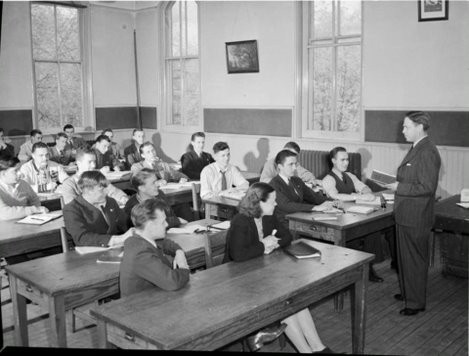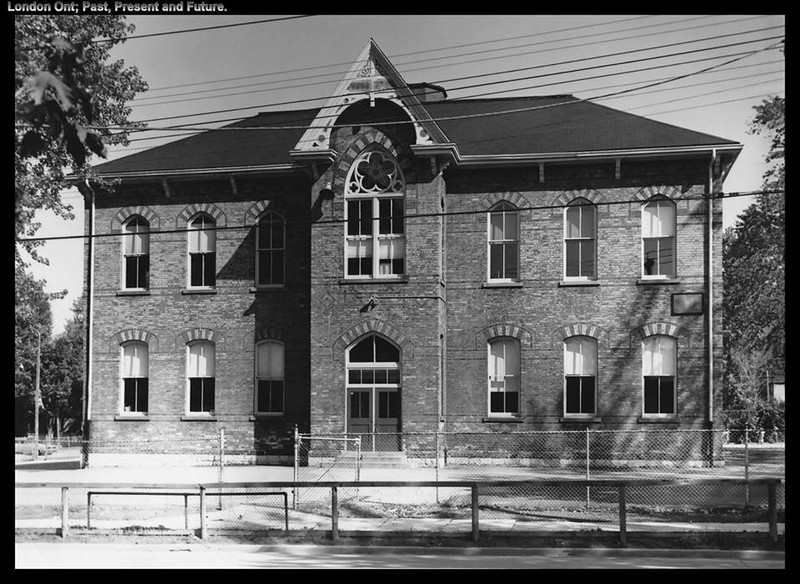Talbot Street School
Introduction
Author-Uploaded Audio
Listen to a narration of this entry's description by UWO Digital Public History 2019.
Text-to-speech Audio
Images
Veterans in class at Talbot Street School

Talbot Street School 1967-1968

Backstory and Context
Author-Uploaded Audio
Listen to a narration of this entry's description by UWO Digital Public History 2019.
Text-to-speech Audio
A number of World War Two veterans returned to London who had enlisted before completing their high school studies. In response, Talbot Street School and London Central Collegiate together formed the London Tutorial School for ex-servicemen and women. To engage these students, classes were taught by former high-school teachers who were veterans themselves, and the programs emphasized individual instruction to make the return to studies seamless. The goal of the London Tutorial School was to prepare students for post-secondary education.
Concurrently, the Canadian Vocational Training program was created to help World War Two veterans, who had been away for potentially years, return to “civvy street” with job training. The program offered paid on-the-job training, classroom training in trades, and apprenticeships related to each veteran’s war experience. These training programs typically lasted between one month and one year. Each veteran enrolled in the program received a monthly grant of $60 to $130, depending on marital status and the number of children in the family. Although only a third of veterans accepted the offer of free vocational training, the program was expensive. By March 1951, the Canadian Vocational Training program had paid over $75 million to over 81 thousand veterans across Canada. “About 90 percent of those who started CVT courses completed them successfully. By late 1946 their unemployment rate was about half that of veterans in general.”
Sources
Historic Sites Committee. “Talbot Street School (Plaque No. 15): London Public Library.” Talbot Street School (plaque no. 15) | London Public Library. London Public Library. Accessed October 19, 2019. http://www.londonpubliclibrary.ca/research/local-history/historic-sites-committee/talbot-street-school-plaque-no-15.
London Free Press. April 12th, 1945.
UWO Public History 3813E 2019. “Veterans Return to High School Studies.” Spanning the Gap. Historypin, March 22, 2019. https://www.historypin.org/en/returning-veterans-and-higher-education/geo/42.984923,-81.245277,11/bounds/42.852423,-81.393136,43.117138,-81.097418.
“Vocational Training on Civvy Street.” Vocational Training on Civvy Street. Ottawa, ON: Wartime Information Board, 1945.
London Free Press, 12 April 1945
London Ontario; Past, Present, and Future
